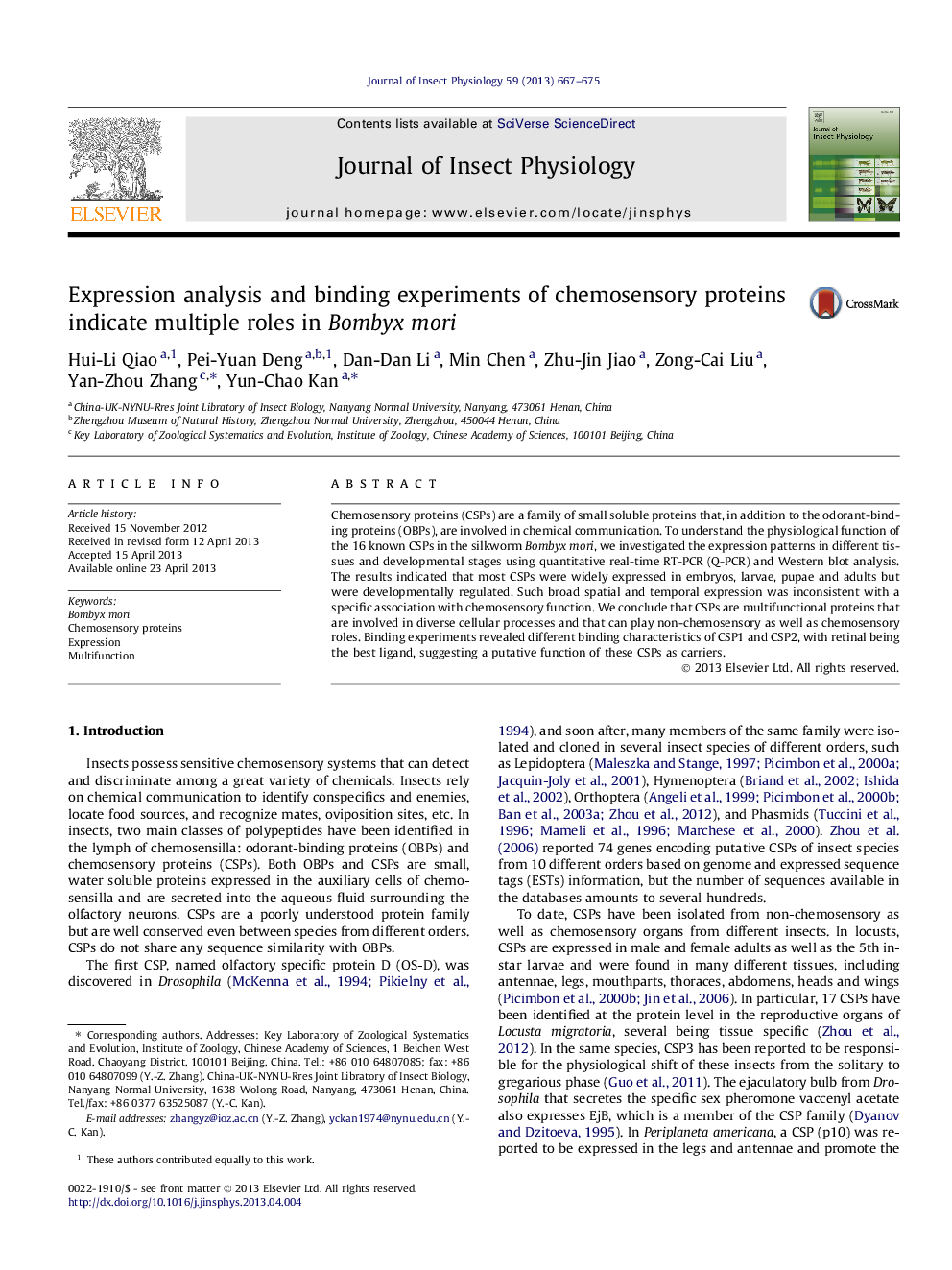| Article ID | Journal | Published Year | Pages | File Type |
|---|---|---|---|---|
| 2840584 | Journal of Insect Physiology | 2013 | 9 Pages |
•The expression patterns of CSPs was analyzed at both RNA and protein levels.•Bombyx mori CSPs were broadly expressed and developmentally regulated.•Binding experiments suggest a putative function of CSP1 and CSP2 as carriers.•Chemosensory proteins have multifunctional roles in B. mori.
Chemosensory proteins (CSPs) are a family of small soluble proteins that, in addition to the odorant-binding proteins (OBPs), are involved in chemical communication. To understand the physiological function of the 16 known CSPs in the silkworm Bombyx mori, we investigated the expression patterns in different tissues and developmental stages using quantitative real-time RT-PCR (Q-PCR) and Western blot analysis. The results indicated that most CSPs were widely expressed in embryos, larvae, pupae and adults but were developmentally regulated. Such broad spatial and temporal expression was inconsistent with a specific association with chemosensory function. We conclude that CSPs are multifunctional proteins that are involved in diverse cellular processes and that can play non-chemosensory as well as chemosensory roles. Binding experiments revealed different binding characteristics of CSP1 and CSP2, with retinal being the best ligand, suggesting a putative function of these CSPs as carriers.
Graphical abstractFigure optionsDownload full-size imageDownload as PowerPoint slide
